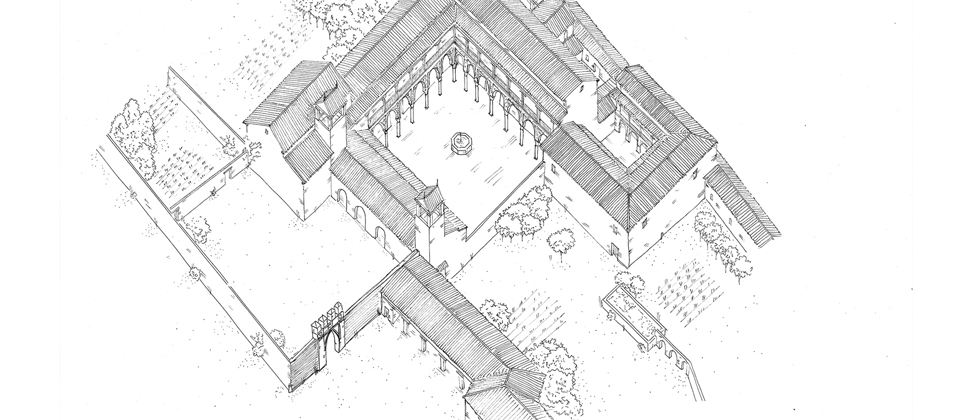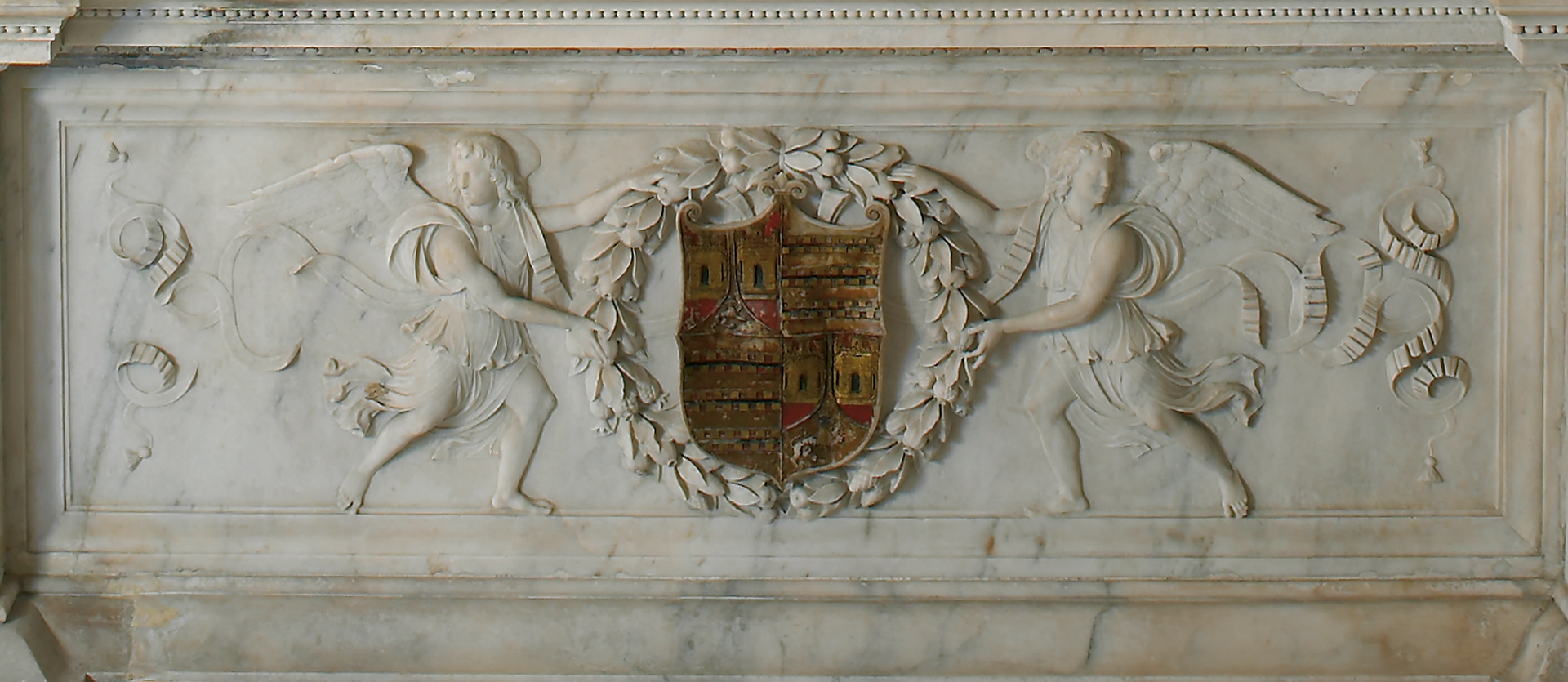Chapel of the Flagellation
The fusion of languages in the Mudejar period
The interior of the Chapel, like the entire medieval palace in general, is a singular example of the fusion of Christian and Muslim languages in the Mudejar period. Profusely covered with ataurique plasterworkThe intertwined branches forming stylised plant motifs, the most commonly used in Caliphate art, is cover, however, in GothicThe vaulting is made up of two tierceron vaults -significantly similar to those of the oratory of the Catholic Monarchs in the Alcazar- whose ribs, decorated with vegetal motifs and the arms of Enriquez and Sotomayor, rest on angels with attributes of the Passion of Christ.
Dry rope tiles
The walls are lined with the only tile skirting boards of the palace, and one of the few that remain in Seville, made with the dry rope techniqueThis was the prevailing style in the second half of the 15th century, which only allowed for geometric compositions such as these lacemented ones. At first glance, one can distinguish the different texture of these tiles from the basin or groin tiles that cover the rest of the palace walls.
The Early Christian Good Shepherd
Above the altar there is an early Christian piece of rounded bulk from the 3rd century A.D., representing the Good Shepherd which derives directly from pagan models of Hermes carrying the sacrificial sheep. From the Vatican collections, it was a gift of Pope Pius V to the 1st Duke of Alcalá. Lastly, in the centre of the chapel, a column which tradition identifies as copy of that of the flagellation of Jesus Christ and attributed to a commission from the 1st Marquis of Tarifa on his return from his pilgrimage to Jerusalem, gives its name to this oratory.



